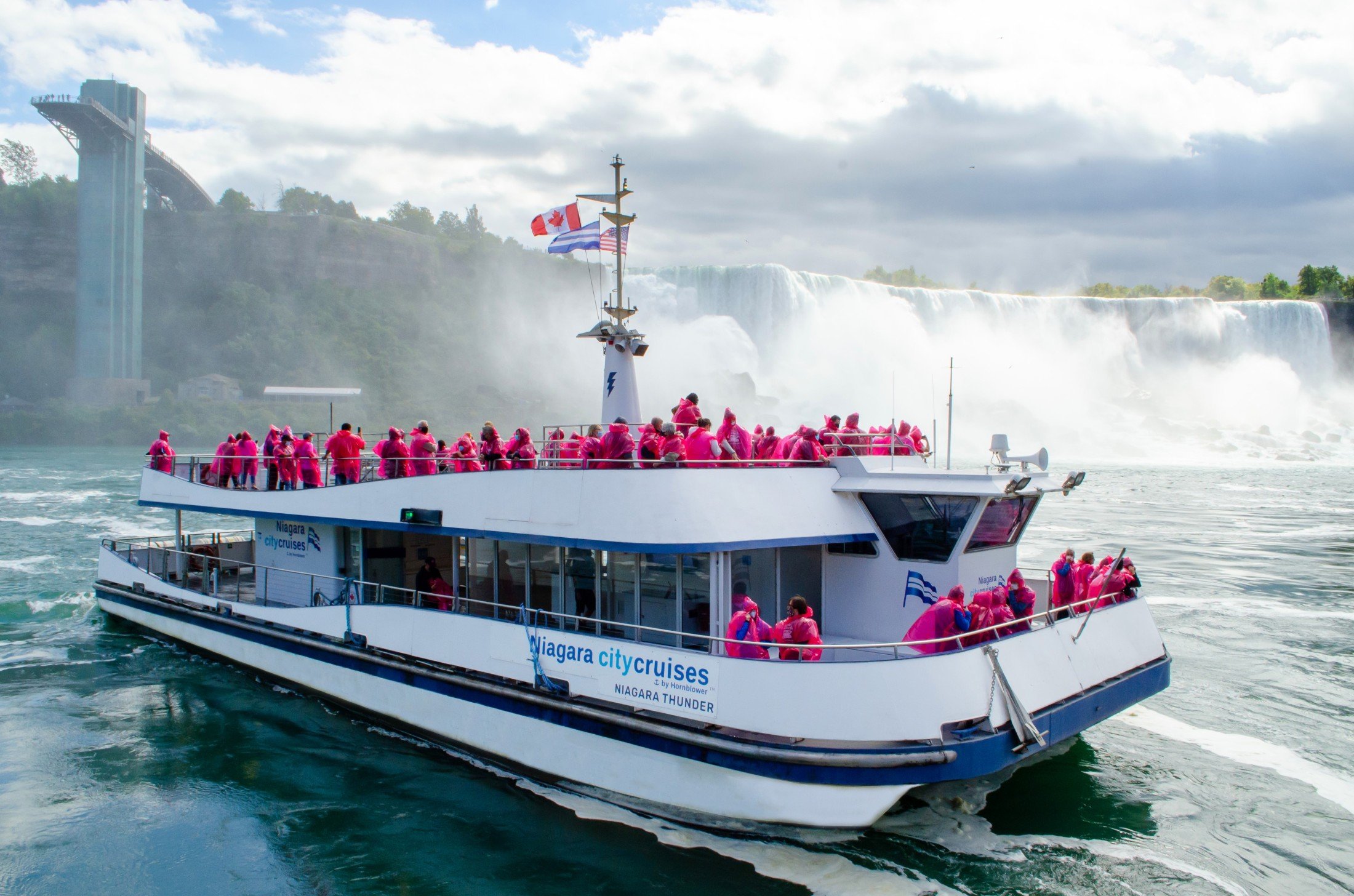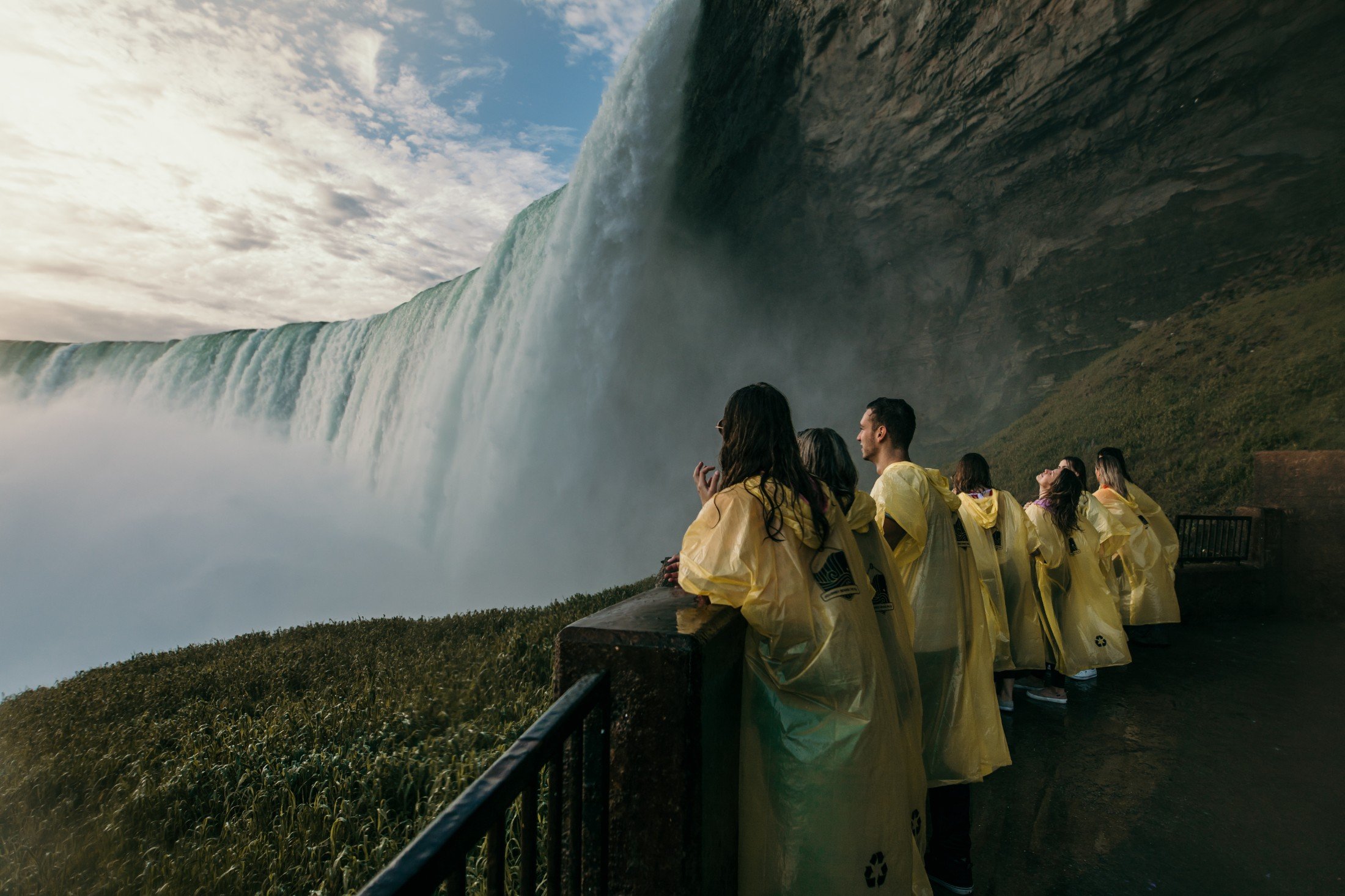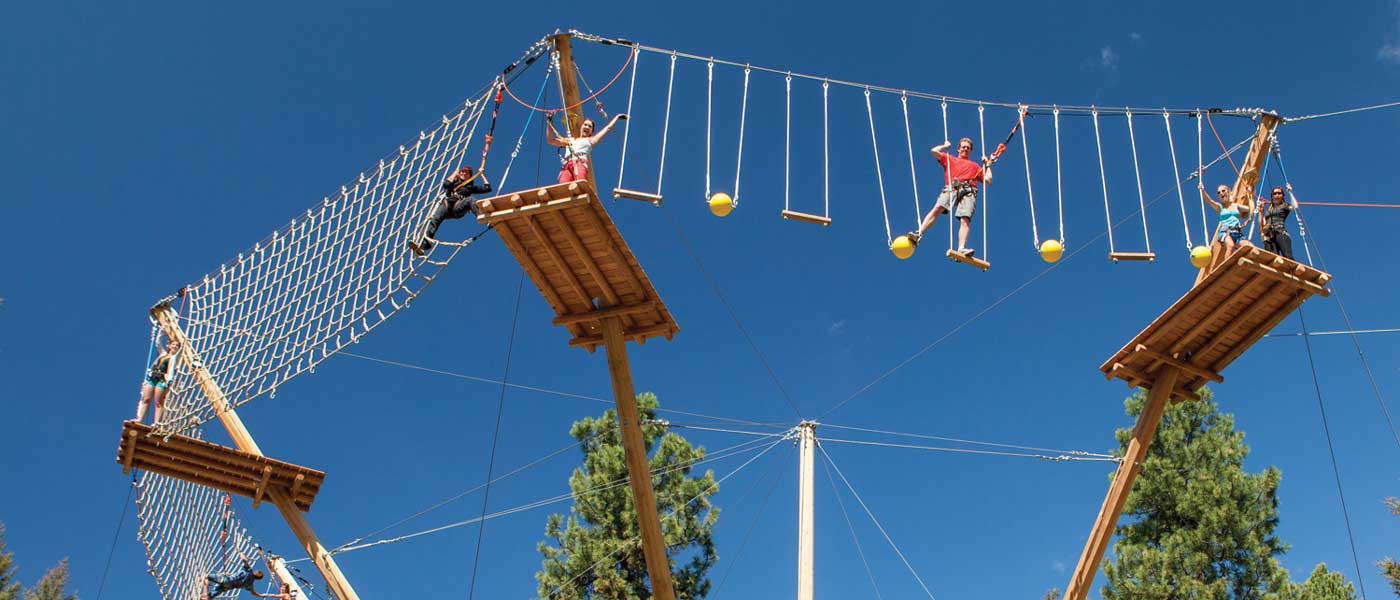
Destination & Member Sustainability

Destination & Member Sustainability
Sustainable Niagara Falls
Niagara Falls is a global iconic destination filled with awe-inspiring natural wonder, history and adventure. Inspired by Earth Day, we’ve brought together this collection of green spaces, environmental and sustainable stories in Niagara Falls.
Visitors from Ontario, across North America and around the world who come to experience adventure, discover family fun, feel the romance and create unique and memorable experiences have made Niagara Falls Canada’s #1 leisure destination.
Niagara Falls Illumination
Earth Hour
Each year Niagara Falls joins Earth Hour, one of the largest grassroots movements for the environment that unites individuals, businesses and communities around the globe. As nonessential lighting goes dark during Earth Hour around the world, the nightly illumination of Niagara Falls will go dark for Earth Hour as part of this call to action of hope for a better, healthier planet.
Earth Day
Each year on the evening of April 22, Earth Day, Niagara Falls is illuminated green in celebration of Earth Day around the world. Please see the illumination calendar for further details.
Niagara Falls Tourism Operators Programs
Niagara City Cruises Respect Our Planet Program
Niagara City Cruises operates through our Respect our Planet program; the basis of our operations and management philosophy. Through our Respect Management System (RMS), we will serve our guests better, keep our crew and guests safe, and leave the planet a better place than when it began.
Environmental Stewardship at Niagara Parks
Niagara Parks is committed to preserving the natural wonders of the Niagara River corridor, ensuring the sustainability of our forest canopy, promoting species diversity, and implementing effective shoreline management practices.
WildPlay Element Parks 1% For the Planet
1% of all Extreme Adventure Course purchases goes towards the preservation and restoration of our planet.
Hilton Niagara Hotel & Suites Falls/Fallsview Adopt-a-Street & Lightstay Program Initiatives
Hilton Niagara Falls takes part in the Adopt-a-Street Program, in coordination with the City of Niagara Falls. Fallsview Boulevard has been adopted by Hilton Niagara Falls and they are committed to cleaning the street at least 3 times a year. The Hilton is involved in the Lightstay Program, in which water usage, electricity and gas usages are recorded as well as waste sorting and auditing. This collected data is used to track comparisons YOY, and used to continue to produce program improvements. Sustainability projects are tracked and updated through Lightstay on a regular basis.
FeastON Restaurants
Committed to sourcing Ontario grown and made food and drinks, a restaurant with the FeastON designation ensures you will enjoy the Niagara terroir of a locally sourced and inspired meal.
All five of the Niagara Parks’ restaurants focus on locally sourced ingredients: Table Rock House Restaurant, Queen Victoria Place Restaurant, Queenston Heights Restaurant, Legends on the Niagara Restaurant and Whirlpool Restaurant.
Vineland Estates (Vineland) dates back to the 1800s and rests on the fertile Niagara Escarpment, located on a former Mennonite Homestead painstakingly restored. With sweeping views of lush vineyards, the farmhouse is the perfect place for an enjoyable and customizable dining sensation.
Peller Estates (Niagara-on-the-Lake) is the ultimate wine and food lover’s playground. Partake in a barrel cellar dinner, fine dining in the Winery Restaurant with Executive Chef Jason Parsons, or casual dining on the patio’s Barrel House Grill. Party in the Vineyard at the annual food truck event in spring and country music festival in summer.
Calendar of Blooms
Niagara Falls is surrounded by spectacular gardens considered among the most beautiful public gardens in Canada and the world. The gardens are open year around and the flowers vary each season offering a landscape of changing colours. There’s always something in bloom! We’ve put together the perfect list of upcoming annual blooms and major horticultural collections in Niagara Falls:
MARCH
Snow Drops and Crocus
These early spring blooms are the first signs that warmer weather is coming and appear while there is still snow on the ground. Snow Drops sprout out of the ground in early March and blanket the grounds with their small white bell-shaped flowers. Soon after, in late March, the colourful crocus with their vibrant yellow, mauve and purple flowers make a cheerful appearance.
Best viewing sites:
-
Queen Victoria Park - on the west side of the walking path that runs from Clifton Hill to Murray Hill
-
Niagara Parks Botanical Gardens - in the Woodland Gardens
APRIL
“Daffodil Capital of North America” (Queen Victoria Park)
In early April, a spectacular sea of well over one million blooming daffodils is the reason why Niagara Falls has become known as the Daffodil Capital of North America. Every daffodil is represented in colour from white, yellow, white and yellow and white with orange. 30,000 daffodils are added each year.
Best viewing sites:
-
Queen Victoria Park - on the west side of the walking path that runs from Clifton Hill to Murray Hill
-
Table Rock Centre – Along the stone railing that overlooks the Falls
Tulips
Around mid-April thousands of colourful red Species Tulips with their narrow, pointed flowers begin blooming followed by Hybrid Tulips starting around the third week of April. 40,000 new bulbs are added to the collection each year and the bulbs are rotated each fall to provide a colourful new display of blooms each spring.
Best viewing sites:
-
The Niagara Parkway
Forsythia
You will find these bright yellow shrubs in plant beds and hedgeways and at the Botanical Gardens where you can see different varieties and different tones of yellow.
Best viewing sites:
-
The Niagara Parkway
Cherry Blossoms and Crabapple Vista
The indigenous species of white cherry blossoms are followed by pink cherry blossoms and deeper pink Crabapples along the Niagara Parkway. Don’t miss Crabapple Vista at the Botanical Gardens.
Best viewing sites:
-
The Niagara Parkway
Magnolia Allée
Around mid to late-April hundreds of magnificent magnolia trees and shrubs bloom in Niagara Falls. Dubbed Magnolia Allée, enjoy a walk through this stunning pathway of approximately 50 trees lined with magnificent bright pink, white and yellow Magnolia trees at their peak of bloom.
Best viewing sites:
MAY
Hydrangea Show
The Annual Hydrangea Show just in time for Mothers Day Weekend features gigantic spheres of colourful blue, pink and white Hydrangeas are featured. As many as 20,000 plants are grown annually complementing the stunning array of tropical plants plus incredible orchids with blooms in a range of colours and sizes.
Best viewing sites:
With 1,200 lilac bushes with over 200 varieties on 10 acres, the Centennial Lilac Garden is in spectacular fragrant bloom with purple, white, pink, blue, pink and white, fuscia, double and single blooms for only a few weeks each spring. New plantings are introduced each year to ensure a growing field. Created in 1967 to commemorate Canada's Centennial Year, the American Rotary Clubs of District 709 contributed funds towards the development of this unique garden.
Best viewing sites:
- North of Niagara Parks Floral Clock
The Iconic Floral Clock
Each year, the intricate design on the face of the iconic Floral Clock is planted with approximately 20,000 plants. The clock design is changed twice each year seasonally and features a different theme each year. Spring planting begins the third week of May and takes up to two weeks to complete.
Best viewing sites:
- North of the Niagara Parks Botanical Gardens
JUNE - JULY
Canada’s Largest Rose Garden
In addition to perennials, rhododendrons, azaleas, a formal parterre garden, herb and vegetable plantings, the world-famous rose garden features more than 2,500 roses bushes and 120 different species.
Best viewing sites:
JULY - AUGUST
New - Visit the gardens at the new Niagara Parks Power Station scheduled to open July 1, 2021. Featuring indigenous plants that can be found in Canadian forests, meadows, wetlands and prairies and include pollinator plants.
Best viewing sites:
Pollinator Gardens, Prairie Gardens and Sustainable Projects
Fourteen pollinator gardens can be found along the Niagara Parkway from Fort Erie to Niagara-on-the-Lake designed to sustain the ecosystems and provide support for a wide range of pollinating species, many considered at risk. Five pollinator gardens can be found at Legends on the Niagara Golf Complex as well as a 100-acre habitat restoration pollinator meadow. A Legacy Prairie Garden with over 15,000 locally sourced, native wildflowers and shrubs, from manicured gardens to natural habitats is located at the Niagara Parks Botanical Gardens. The Chippawa Grasslands Bird Habitat Management project will restore approximately 50 hectares (120 acres) of fallow former agricultural fields into native grassland habitat to protect and enhance bird habitats.
Best viewing sites:
- The Niagara Parkway
- Niagara Parks Botanical Gardens
Green Spaces and Gardens
- Niagara Glen and Nature Centre - Overlooking the Niagara River, deep in the Great Gorge, the Niagara Glen is a designated Nature Reserve with 4 km (2.5 mi) of paths that wind through a pristine pocket of Carolinian Forest, past boulders left behind as the Falls eroded through the area thousands of years ago.
- Gardens - Niagara Falls is surrounded by some of the most spectacular gardens that are ranked among the most beautiful public gardens in Canada and the world. The gardens are open year around and the flowers vary each season offering a landscape of changing blooms. Queen Victoria Park, the heart of Niagara Parks, celebrates every season in style with a visual spectacle, from 500,000+ daffodils and tulips in spring. Niagara Falls is the Daffodil Capital of North America owing to the growing number of daffodils that number well over 1 million. The spectacular Oakes Garden Theatre is the entranceway to Queen Victoria Park, the key central area of Niagara Parks that showcases the perfect panoramic view of the Falls. Concerts and special events are held here throughout the summer. The Niagara Parks Botanical Gardens is among Canada’s largest with 40 hectares (99 acres) of beautifully maintained gardens to explore including the largest rose garden in Canada and is home to the Butterfly Conservatory, one of the largest in North America. Walk the green spaces and smell the flowers at the Floral Showhouse. With seven shows a year something new is always in bloom. Visit Niagara Parks in May or early June to experience the fragrant Centennial Lilac Garden with over 1,200 plants and over 200 different varieties.
- Parklands - Dufferin Islands, popular with locals and tourists alike, offers ten acres of quiet secluded parkland including several small islands secluded parkland including several small islands connected by bridges and footpaths. Admission free. Picnicking available. Nestled high atop the Niagara Escarpment, Queenston Heights Park is the birthplace of Niagara Falls - garden and nature lovers, hikers and picnickers have used this park for generations. Queenston Heights Park is also a terminus point of the Bruce Trail.
- Scenic Trails Whether by foot or bike, discover 56 kilometers (35 miles) of historical and horticultural sights along the Niagara River Recreational Trail. Bordering the winding Niagara River, travel past the Horseshoe Falls, historical sites, attractions, restaurants and parkland as this trail connects Fort Erie to Niagara-on-the-Lake.
- Cycling Niagara is one of Ontario’s premier cycling destinations with exceptional cycling routes and trails for beginners and pros alike. Cycle, walk, run or rollerblade through the Greater Niagara Circle Route, a 140 km picturesque route along the Niagara Parkway beside Niagara Falls leading you through the lush greenery of the Niagara Escarpment. Niagara River Bike Tours offer two- and half-hour cycling tours showcase the hidden gems along the Niagara River.
- Birding The Niagara River corridor offers a unique year round destination for bird lovers, adventure travelers and ecotourists alike.
- Bouldering in Niagara Glen The Niagara Glen has become a popular bouldering hotspot. Bouldering permits can be purchased at the Niagara Glen Nature Centre and the Butterfly Conservatory.
- World-Class Golf Niagara Falls is a world-class golf destination with 8 top golf courses (35 in the Niagara Region) designed by famed architects including Legends on the Niagara, Canada’s premier public golf course, and the Whirlpool Golf Course, one of Canada’s most highly rated and renowned public golf courses located in a spectacular setting against the backdrop of the Niagara River Whirlpool and Gorge.
- Geocaching in Niagara Parks is an outdoor treasure hunt where the goal is to find hidden containers, known as caches or geocaches, using a portable satellite navigation device called a Global Positioning System (GPS) receiver. Niagara Parks has a number of geocaches to find. More information regarding different types of caches and geocaching in general can be found at Geocaching.com, and Earthcache.org.
Sustainable Gardening Projects
Pollinator Garden Route, Prairie Gardens, Meadow Spaces and Tall Grass Areas
Fourteen pollinator gardens can be found along the Niagara Parkway from Fort Erie to Niagara-on-the-Lake designed to sustain the ecosystems and provide support for a wide range of pollinating species from bumblebees to hummingbirds, many considered at risk. The gardens are connected through both the scenic Niagara Parkway and the Niagara River Recreation Trail, creating the Pollinator Garden Route which can be enjoyed by bicycle, foot, or automobile.
Fourteen interpretive signs include references to Indigenous myths, which offer wisdom about our connection to animals and our environment. The content of the signage was inspired by the Haudenosaunee Confederacy (Iroquois), the Wabanaki Confederacy (Algonquin) and Anishnaabe (Algonquin), all of whom inhabited this area throughout history, and their spiritual connection with the animal kingdom. To honour this legacy and to celebrate Ontario150, the province’s sesquicentennial year, Niagara Parks has worked with local Indigenous artists and writers to develop a collection of animal legends and artwork that feature some of Ontario’s native species.
Best viewing sites:
- The Niagara Parkway
- Niagara Parks Botanical Gardens
Legends on the Niagara Golf Complex
Five pollinator gardens can be found at Legends on the Niagara Golf Complex as well as a 100-acre habitat restoration pollinator meadow.
Best viewing sites:
Legacy Prairie Garden
A Legacy Prairie Garden with over 15,000 locally sourced, native wildflowers and shrubs, from manicured gardens to natural habitats showcases Ontario’s prairie-like ecosystems and provides pollen to vast numbers of native butterflies from May to October.
Best viewing sites:
Chippawa Grasslands Bird Habitat Management Project
The Chippawa Grasslands Project will restore approximately 50 hectares (120 acres) of fallow former agricultural fields into native grassland habitat to protect and enhance bird habitats. Using a diverse mix of native grasses and wildflowers it will also support pollinators.
Niagara River Coastal Wetland Restoration Project
The Wetland Restoration Project will provide essential habitat to increase fish populations in the Niagara River.
Environmental Protection
Niagara Parks has established an enviable record of land stewardship. Their Environmental Mission Statement “improve environmental quality and sustainable development throughout the Parks system for the benefit of visitors, employees and associates” is reflected in many important preservation and environmental initiatives. Full details about the Niagara Parks environmental commitments and programs can be found here.
Project Green Initiatives
- Plant Health Care
- Golf Operations
- Recycling and Composting
- Botanical Gardens & School of Horticulture
Environmental Partnerships:
- Air Emissions Reduction Program
- Moraine Management Plan
- Environmental Alliance
- Niagara River Restoration Partnership
- Water Quality Improvement Buffer Project
- Educational Programs
- Niagara Glen Vegetation Survey
- Niagara River Riparian Habitat Management Plan and Policy
- Niagara Glen Trail Management System
- Oak Savannah Projects
- Greenspace Enhancement & Reclamation
- Dufferin Islands Reclamation
Environmental Designations
WORLD BIOSPHERE RESERVE
The Niagara Escarpment has been recognized as a biosphere reserve by U.N.E.S.C.O. There are 714 biospheres in the world, a designation that demonstrates excellence in sustainable development and allows for conservation, research and continued sustainable development. The geological nature of the Niagara Escarpment was a major factor in its being declared a World Biosphere Reserve by the United Nations Educational, Scientific and Cultural Organization (UNESCO) on April 4, 1990. The Escarpment corridor crosses two major biomes: boreal needle leaf forests in the north and temperate broadleaf forest in the south. The wildlife of the Niagara Escarpment with its wide diversity of birds, mammals, reptiles and amphibians, including a number of rare or endangered species, was a contributing factor to the UNESCO decision. The biosphere concept includes humans as part of an ecosystem.
What to explore on the Niagara Escarpment: Head to the Niagara Parks Botanical Gardens with 40 hectares (99 acres) of beautifully maintained gardens to explore and world-famous rose gardens with over 2,400 roses. Home to the magical Butterfly Conservatory, one of the largest in North America where you will see over 2,000 butterflies with over 45 species of tropical butterflies floating along lush paths. Bring Niagara history to life. A self-guided tour of the Battle of Queenston Heights starts at Brock’s Monument, a tribute to Sir General Isaac Brock, commander of the British forces in Upper Canada. Continue climbing to the top of the Niagara Escarpment for a magnificent view. Be sure to snap some photos at the Niagara Scenic lookout just North of Queenston Heights. Nestled high atop the Niagara Escarpment, Queenston Heights Park is the birthplace of Niagara Falls - garden and nature lovers, hikers and picnickers have used this park for generations. Queenston Heights Park is also a terminus point of the Bruce Trail. Visit the Laura Secord Homestead to learn how Laura Secord began the journey that has earned her a place in Canadian history.
CAROLINIAN LIFE ZONE
The Niagara Peninsula is considered part of the Carolinian Life Zone. This Zone is actually the northernmost edge of the deciduous forest region in eastern North America and is named after the Carolina states. In Canada the Carolinian Life Zone is a narrow band across Southern Ontario, that supports the most productive and endangered assortment of plant and animal species in Canada.
Visit the Niagara Glen to hike through a Carolinian Forest.
PROVINICALLY SIGNIFICANT - AREA OF NATURAL AND SCIENTIFIC INTEREST (ANSI).
This is a designation by the Ontario Ministry of Natural Resources (OMNR). There are two categories, Life Science and Earth Science. From the OMNR fact sheet:
- The Niagara Gorge is a Life Science ANSI because of its “large and excellent example of escarpment valley and slope. Rich, varied, highly significant vegetation patterns and flora. One of the most impressive of the Niagara Peninsula escarpment features.”
- The Niagara River Bedrock Gorge is an Earth Science ANSI because it is the “largest river gorge and most extensive Silurian exposure of its type in Southern Ontario.” Environmentally Sensitive Area (ESA). This is a regional designation reflected in municipal planning policies.
Explore the Niagara Gorge: Soar above the Gorge on the Whirlpool Aero car, a cable car with incredible views of the Niagara Whirlpool high above the racing Niagara River. Explore the WildPlay Whirlpool Adventure Course, a unique Niagara experience of suspended obstacles and ziplines provides a new fun and thrilling way to see the world-famous whirlpool and Niagara Gorge from high above. Or get right down into the Gorge to marvel at the relentless power and beauty of the White Water Walk. This experience offers a breathtaking boardwalk at the very edge of one of the world's wildest stretches of whitewater (class 6 rapids)! The Niagara River Recreational Trail meanders through some of the most beautiful countryside in the world.
DESIGNATED NATURE RESERVE
The Niagara Glen was designated a Nature Reserve (a protected area of importance for flora, fauna and geographic features) in 1992 and features 4 km (2.5 miles) of paths that wind through a pristine pocket of Carolinian Forest (a life zone in North America characterized by trees with broad leaves).
Explore the Niagara Glen: explore 4 km (2.5 mi) of paths that wind through a pristine pocket of Carolinian Forest, past boulders left behind as the Falls eroded through the area thousands of years ago. Hikes through the Niagara Glen involve an elevation change of over 60 m (200 ft). The Glen has become Ontario’s hotspot for Bouldering.
GLOBALLY SIGNIFICANT IMPORTANT BIRD AREA (IBA)
The Niagara River corridor offers a unique year round destination for bird lovers, adventure travelers and ecotourists alike. In 1996, the entire Niagara River corridor, stretching 56km (35 miles) from Lake Erie to Lake Ontario, became the first site in North America to receive international recognition as a globally significant “Important Bird Area” by major conservation groups in Canada and the United States. More than 370 bird species can be found in the Niagara River Corridor, more than in any other river in Canada. Starting mid-November, the river comes alive with more than 100,000 gulls on migratory flights from as far north as Greenland and the Canadian Arctic to as far south as Florida. The introduction of eBird now makes it possible to keep a life list of bird sightings and explore sightings in any area - 170 species have been found at Dufferin Islands in Niagara Falls. Numbers from eBird show that birdwatching, already considered the fastest growing recreational activity prior to the pandemic, has increased 30% since March 2020.
Every February, bird lovers and conservationists celebrate the vast diversity of northern birds that call the mighty river corridor their home each winter at Birds on the Niagara, the only international bird festival in North America.
Where to bird watch in Niagara Falls all year round: Table Rock Centre, Dufferin Islands, the upper Niagara River.






























